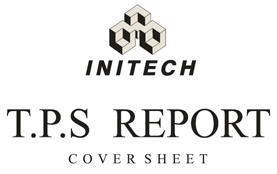 In the 1990s Six Sigma was the hot quality improvement program.
In the 1990s Six Sigma was the hot quality improvement program.
Born out of industrial manufacturing Six Sigma uses statistical methods and process-improvement techniques to save costs and boost profits by identifying and eliminating defects.
Over the span of a decade Six Sigma evolved from the assembly line to the cubicle. Now even information workers at service companies are being immersed in Six Sigma.
I saw this transformation first-hand as I went through my initial Six Sigma training at two General Electric businesses (Energy and Healthcare) and then at the software company Intuit.
In addition to weeks of classroom training, we also spent 2-8 months of implementing what we learned in actual projects–a significant commitment in time for the employee and company.
Companies loved the Six Sigma promise and philosophy. Who wouldn’t want to maximize profits while minimizing costs? The problem was, companies also thought the program took too long to adopt and implement, and cost too much.
Enter the “Lean” Philosophy
The term “Lean”, in the context of process-improvement, was coined in the 1990s first for Lean Manufacturing; it was then applied to Lean Six Sigma, and even Lean IT. The Lean philosophy was developed primarily by the Toyota Production System (TPS) as a concept to preserve value with less work. As a discipline matures, new methods are developed to improve the quality and reduce the costs of products and services.
The focus on meeting customer needs gets obscured by filling out process documents, internal meetings, approval processes, etc. (and yes, new cover letters on TPS reports—didn’t you get the memo?).
So, “Lean” is not a new diet plan. It’s keeping the quality while reducing the waste in the processes. It’s not doing fewer methods to improve quality, it’s refining the methods so we spend less time processing, producing and waiting.
How does the “Lean” philosophy tie into the User Experience?
Similar to Lean Six Sigma, Lean UX is a trimmed-down version of the methods that fall under the umbrella of user experience. The focus is on making better decisions instead of deliverables. In user experience, the focus is on the user. With large projects and teams of developers, designers, and managers, the focus easily gets shifted to generating better deliverables instead of better design that the customer feels.
So, when cutting out the waste (anything not used in the development of the working product), what do you keep and what do you leave behind? You keep the elements that impact the customer and improve the customer experience. You trim it down to the core activity—getting user input into the design process—to arrive at improvements to the user experience.
Lean UX speeds up the product development time by providing insight early on in the design process. This insight helps the developers decide where to devote their energy to minimize waste.
Jeff Gothelf also adds : “Whatever you leave in your Lean UX process should maximize learning. Your goal as a Lean UX designer is to learn as much as you can as quickly as you can. What’s the smallest thing you can design to get that next set of insights and learning? That’s Lean UX. It’s a direct application of Eric Ries’ innovation accounting idea applied to UX design.”
Talking about Lean UX in principle is one thing (who doesn’t want to eliminate waste?) but what about Lean UX in practice? Lean UX is new and it seems there are more questions than answers; questions such as:
- What is the waste we cut from our cherished UX methods and processes?
- How does Lean UX fit into Agile development?
- How can methods like A/B testing and unmoderated usability testing support the Lean philosophy?
- What are the best ways to form and test a design hypothesis?
- How can tools like MeasuringU and UserTesting.com support Lean UX research?
To get those answers, I’ve invited the leading thinkers on Lean UX, Traditional Lean, UX Measurement and Agile UX to a conference this September 20th in Denver, Colorado–LeanUXDenver: Speakers include :
- Gerry McGovern
- Jeff Gothelf
- Jim Lewis
- Bill Albert
- Tomer Sharon
- Jon Innes
Lean UX Denver won’t just be a guru fest, we also have the VP of Design at PayPal Hendrik Kleinsmiede coming to talk about how PayPal is implementing LeanUX into its development process. Before and after the event we also have several popular half-and full-day tutorials on UX research and measurement.
Register for the Lean UX Denver Conference on September 20, 2012 at the Hyatt Convention Center.